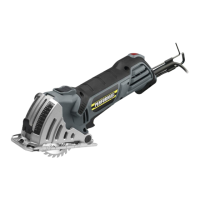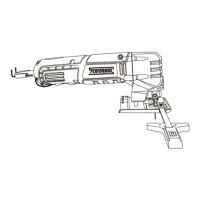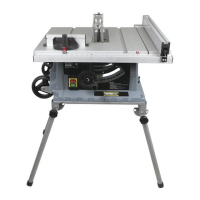9
ELECTRIC CONNECTION
This tool has a precision-built electric motor. It should be connected to a power supply that is 120
volts, 60 Hz, AC only (normal household current). Do not operate this tool on direct current (DC). A
substantial voltage drop will cause a loss of power and the motor will overheat. If your tool does not
operate when plugged into an outlet, double-check the power supply.
EXTENSION CORDS
When using a power tool at a considerable distance from a power source, be sure to use an extension
cord that has the capacity to handle the current the tool will draw. An undersized cord will cause a
drop in line voltage, resulting in overheating and loss of power. Use the chart to determine the mini-
mum wire size required in an extension cord. Only round jacketed cords listed by Underwriter’s Labo-
ratories (UL) should be used.
When working outdoors with a tool, use an extension cord that is designed for outside use. This type
of cord is designated with “WA” or “W” on the cord’s jacket.
Before using any extension cord, inspect it for loose or exposed wires and cut or worn insulation.
** Ampere rating ( on faceplate )
0 ~ 2 2.1 ~ 3.4 3.5 ~ 5 5.1 ~ 7 7.1 ~ 12 12.1 ~ 16
Cord lenght
Wire size according A.W.G. ( Amercian wire gauge )
25'
16 16 16 16 14 14
50'
16 16 16 14 14 12
100'
16 16 14 12 10 -
Table 1 : minimum wire size required in an extension cord.
**Used on 12 gauge - 20 amp circuit.
WARNING :
Keep the extension cord clear of the working area. Position the cord so that it will
not get caught on lumber, tools or other obstructions while you are working with a
power tool. Failure to do so can result in serious personal injury.
WARNING :
Check extension cords before each use. If damaged replace immediately. Never use
tool with a damaged cord since touching the damaged area could cause electrical
shock resulting in serious injury.

